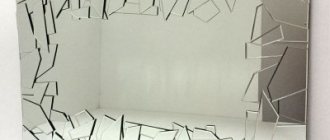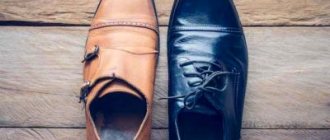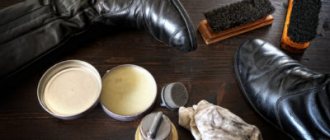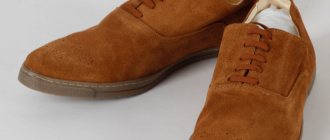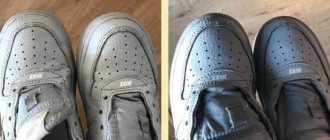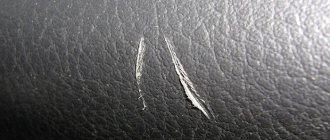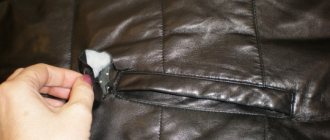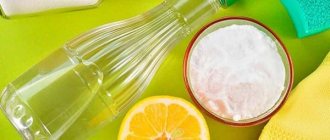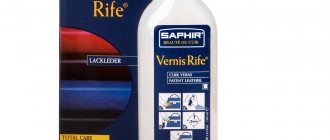09/10/2019 Maria Ivanova 0 comments
Incorrect handling of leather shoes can give them an unaesthetic appearance, when, due to numerous creases, an important wardrobe item looks dented and wrinkled. No one wants to be called a slob because of shoes that look like they've been under the wheels of a truck. Therefore, it is important to know how to remove wrinkles from leather shoes.
So, what should you do if a very stylish pair of shoes or boots is completely covered with ugly creases? This is not at all a reason to sadly throw shoes that have been tested for durability and comfort into the trash bin. After all, leather is a very expensive material. Everything would be very sad and hopeless if several effective ways to correct the situation were not found.
It turns out that it is quite possible to restore the original shape of the shoe and ensure that changes in geometry are not noticeable.
Causes of creases
You shouldn’t blame the manufacturer for deciding to save on materials. He usually has nothing to do with it. Wrinkles appear even on the most expensive leather. The main reasons for their formation are:
- softness of the material (and without it, hard shoes would be very uncomfortable to wear);
- everyday wear;
- inaccurate size matching;
- lack of quality care.
Shoes with decoration (holes, patterns, additional seams) are less prone to creases. The most problematic are shoes with a single seam, usually located at the back.
What are the defects in shoes?
There are 2 main reasons for the formation of shoe defects: violation of operating rules and non-compliance with production standards.
The use of shoes directly depends on the consumer. Violations on the part of the consumer consist in the fact that the shoes were worn carelessly or were improperly cared for. Defects that are of a manufacturing nature are more difficult to determine. Sometimes they are hidden from view and only appear during operation. Manufacturing defects include:
- low-quality materials;
- non-compliance with pattern diagrams;
- unevenness of the lining fabric;
- various parameters of the same parts;
- incorrect assembly;
- poor-quality external finishing and fittings;
- uneven sole or insole;
- violation of packaging, transportation and storage.
It is important to highlight damage that can be caused both during operation and during production:
- cracks, creases or tears in the material;
- destruction of the line seam;
- the sole moving away from the top of the shoe;
- violation of the external parameters of the heel.
Such defects often cause conflict between buyer and seller.
How to remove small bumps on leather shoes
Various products help eliminate subtle creases and folds. Some are already in the house, while others will have to be purchased specially.
Before treating shoes with each of the preparations you need to:
- Clean products from dirt and dust.
- Degrease. You will need a piece of cotton wool soaked in medical alcohol, kerosene, and white spirit.
- Dry your shoes.
Cream
Shoes are stuffed with paper as tightly as possible. Office paper, newspapers, magazines - whatever you can find - will do. “Wrapped” shoes or boots are left for 2 days to stretch a little. And then - thickly lubricate with a rich cream for leather products and leave for another day. The cream fills folds and makes them less noticeable, and helps remove small creases completely.
Wax tinting
Leather shoes are often treated with wax. Any one is suitable:
- bee;
- paraffin.
First, the wax is heated to a temperature of about +50 °C. No longer necessary - there is a risk of damaging the skin (especially natural skin). Then, carefully fill the fold with wax using a small brush. Leave the shoes in a dark place until the wax hardens completely. Excess is removed with a piece of soft cloth.
If the waxed area is slightly different in color from the rest of the shoe, complete tinting is performed:
- The shoes are stuffed with paper and lubricated with cream.
- Leave for 3 days. Re-lubricate every day to soften the skin.
- After 3 days, rub with unheated wax.
Painting
Often, to combat creases, shoes are coated with a special leather paint. It is sold in most industrial and cosmetic stores. The consistency of the drug should be liquid.
Several conditions must be observed during and after painting:
- the paint is matched to the color of the shoes;
- work with a fine bristled brush or shoe sponge;
- cover the entire surface (but make a thicker layer on the creases);
- leave to dry in a place out of direct sunlight.
On paint packaging it is often written that it is made for “skin restoration” or “skin restoration”. It doesn't matter. Any paint will do, even if there are no special marks on it. What you should pay attention to is the price. It is better not to buy cheap drugs.
There is also paint for the ends (cuts) of leather. She doesn't fit either.
Milk
It is better to treat beige, light brown or white shoes not with cream, but with cow's milk. They work in a similar way - stuff it with paper, leave it for a couple of days, then generously lubricate it with a brush or sponge dipped in milk. Leave to dry.
There are no recommendations regarding the origin, fat content and pasteurization of milk - any is suitable.
Glycerol
Glycerin (it is sold in any industrial market) is rubbed into the folds and the surface surrounding them, and then left for 10 minutes. The excess is carefully wiped off with a damp sponge. Polish shoes with a dry cloth.
Glycerin is also used to soften shoes before waxing or painting.
Liquid skin
This remedy is the most effective. It even copes with deep folds and cracks. They work with it like this:
- They buy leather in a jar that matches the shade of the shoes.
- Clean the boots from dirt, degrease them with alcohol and leave until completely dry.
- Apply the drug in a thin, even layer. Leave for 5 minutes.
- If the folds are still noticeable, repeat the procedure. Can be repeated up to 4-5 times without harm to shoes.
- When the boots are dry, they are treated with a rich cream.
How to straighten a leather bag using pharmaceutical products
How to straighten a leather bag using simple pharmaceutical products.
Creases and folds will become softer and more pliable if you treat them with regular glycerin, petroleum jelly or castor oil. These products, among other things, improve the appearance of any accessory. But you need to treat the entire surface with them, without rubbing it dry, but leaving a fairly generous layer. Use a soft cloth for this. There is no need to rinse off the product; let it soak in and thoroughly polish the surface using a piece of soft woolen cloth. If you are concerned about stains, especially on light-colored accessories, you can use a glycerin solution. It needs to be mixed in one-to-one proportions with water at room temperature and spray the entire surface with this mixture.
This procedure will not harm even the thinnest, refined coated materials. Place something heavier in your bag and leave the accessory hanging for at least half a day. Are there any folds left? This means you will have to use the iron delicately.
How to get rid of large folds and creases
The best way to “deal” with deep creases is to use an iron:
- Shoes are stuffed with dry newspapers.
- Cover with a damp cloth (clean only) and leave until the skin is saturated with moisture. If the rag dries before the skin gets wet, it is re-wetted.
- Turn on the iron at medium power and gently iron it through a cloth. If necessary, repeat up to 3-4 times.
- Allow the boots to cool. If folds still remain, they are treated with liquid leather.
- Leave the shoes to dry without removing the filler.
The method is only suitable for genuine leather. Artificial leather can be damaged by ironing.
Saving patent leather shoes
Leveling the surface is extremely difficult, and deep creases are most often impossible. Therefore, it is initially necessary to prevent the formation of wrinkles. To do this: avoid wearing in damp, frosty or hot weather. But the main condition for protection from damage is proper care using products designed for patent leather.
If, despite all efforts, folds appear, then immediately try to remove them. The rules are the same: stuff with paper, lightly wet the bruises, hold until dry. To remove deep wrinkles, it is better to use the “liquid skin” product. The silicone-based preparation is selected by color, applied to the cleaned surface in several layers, and dried. After this, all that remains is to polish the problem area and prevent bruises in the future.
Advice! Protectors - inserts in the nose part - will help to avoid creases. The inserts are made of plastic, repeat the shape of the product, so they do not interfere with walking.
How to iron different types of shoes
The fight against kinks on different types of shoes made of leather is almost no different. The same methods and drugs are used. But there are also a few differences.
Boots
Boots and shoes are treated the same way. All described methods are suitable, but there are exceptions.
| Treatment | Real leather | Leatherette |
| Iron | Can | It is forbidden |
| Ferry | Can | Can |
| Hot water | It is forbidden | It is forbidden |
And when there is fur inside the boots, they cannot be moistened too much - the lining will “roll up”.
Boots
They work with boots the same way as with boots. But high-top shoes cannot be tightly filled with paper. Therefore, they are treated with liquid leather or tinted with wax. For light-colored boots, you can use milk and colorless wax. The general principle is the same - first, lubricate with a rich cream and leave for 1-2 days to soften the skin, and then treat with the selected drug according to the instructions described above.
Sneakers
Sneakers are shoes that are used intensively. Therefore, bends appear over the entire surface.
An effective tool for straightening creases on sneakers is an iron with a steam function:
- Insoles are cut out of cardboard and placed inside the sneakers. This is important because their soles are softer than other types.
- Fill the internal space with crumpled paper.
- Wash and clean leather surfaces thoroughly.
- Place the sneakers on the ironing board and cover with a wet cloth.
- Gently iron with an iron with the steam function turned on for 2-3 minutes. Pause to avoid damage.
- Allow to cool and only then remove the paper.
Why do they appear?
In the process of cutting parts, defective areas are identified on the material, which the craftsmen avoid.
If, nevertheless, low-quality material was involved in the work and passed to the next stage, then during the inspection process it will be rejected by some other workshop. But by coincidence, such parts are rare, but go further to the process of painting and then assembly. During the assembly process, defects arise due to incorrectly selected parts (that is, they may not fit in size). The assembler may also not follow the rules for bending allowances, the relative position of parts, and the choice of stitch pitch.
The next stage where a mistake can be made is connecting the sole and heel to the upper part of the product. The most obvious ones are: non-compliance with the spacing and standards of sole fastening, different heel heights, twisted or protruding nails and screws.
Failure to comply with transportation and storage rules may result in external mechanical damage. Improper storage often causes mold or stains on the outside and inside, as well as corrosion of metal elements.
How to smooth faux leather shoes
To eliminate folds on artificial leather, do this:
- Clean the shoes from dirt and stuff them with dry paper until it stops.
- Wipe several times with a damp cloth.
- Cover with the same cloth and leave for several hours (overnight is possible).
- Remove the rag and leave it to dry away from sunlight and heating devices.
- Remove the paper when the shoes are completely dry.
Another way is to fill the bathtub with hot water and place your shoes nearby. Close the door. Under the influence of hot air, the artificial material should soften and stretch.
Available methods for removing creases
In everyday practice, various improvised means are used to remove creases. Since there is no special production equipment at home, you will have to use available means. These include the following methods.
- Smoothing with an iron.
- Shaping by gravity.
- Special steam baths for the product.
- Using special leather softeners, which can be purchased in stores.
Each method has its own effect. To achieve an effective result, it is better to combine several options at once. However, you should not overdo it, otherwise you may ruin the product. We will talk about each of these methods in more detail.
Steam
The first and easiest way to remove wrinkles is to soften them using heat and steam. It's quite simple to do. To do this, it is not necessary to use steamers and spend money on expensive equipment. You will need a container of hot water, a 1.5 kg weight and time for smoothing.
- Fill the vessel or tub with hot water.
- Place weights in the bag. It is advisable to evenly fill the entire space with it so that it does not pull off only one edge.
- For convenience, you can hang the product on a hook or stick above a container of water. After some time you will get the desired result.
During the process, a large amount of moisture may condense on the skin. It should be removed with a dry cloth.
Using an iron
A regular household iron can also smooth the bag. This is perhaps the first thing that might come to mind. There is no need to invent anything here, but the operating rule is still worth considering.
When processing a leather product, do not allow direct contact with the surface of the iron, otherwise it will damage the material.
- Pass the steam generator built into the iron over the surface of the bag.
- Steam the inside as well.
- You can iron the fabric from the inside.
All liquid formed from exposure to steam must be removed immediately and not allowed to enter deep layers.
Emollients
If these methods do not help, you can resort to using special softeners. Of course, many people think that they harm the product and spoil it. But nowadays, special formulations have been developed that have a beneficial effect on the skin and do not harm it. You can ask for such compositions in special stores that sell products made from genuine leather.
You can also use improvised means that replace expensive creams and sprays. These include oils, petroleum jelly, glycine, and glycerin.
- Prepare a cream or emulsion from any substance and apply evenly to the bag.
- Additionally, place a weight inside and let the product hang down.
- After some time, the product will return to its original appearance.
How to remove creases from nubuck shoes
Steam treatment is the only effective method of dealing with creases on suede and nubuck:
- Clean and dry shoes.
- Fill with crumpled newspapers.
- Carefully “walk” along the fold several times with fine-grained sandpaper. You need to act carefully so that the nubuck does not go bald.
- Cover with a cloth soaked in water and treat the entire surface with hot air from an iron or hair dryer. Work most carefully on the folds and around them. You can't iron it.
- Remove the paper and leave to dry. The main thing is not to place shoes in the sun or near heaters.
If this method does not help, then the wrinkles from nubuck boots will not go away. It is easier to prevent their formation with proper care than to try to smooth them out.
What is an examination and how is it carried out?
Minor defects can be corrected yourself, others require the work of a specialist. If a defect is found on a new pair of shoes, then it is possible to return or exchange the product. For this it is necessary to conduct an examination.
Often, the services of such specialists are sought to resolve conflict situations. The verification is carried out on the basis of an application from the buyer or seller. All activities carried out are described in regulatory documents. Both half pairs of shoes are used for the study. The inspection is carried out using the organoleptic method, that is, the shoes are examined and felt. Next comes a magnifying glass, tweezers and basic measuring instruments. During the research process, the least qualitative one is identified, the data about which is entered into the act.
In accordance with the decision made, the consumer may demand:
- eliminate the defect at the expense of the seller;
- reduce the price based on quality;
- replace shoes with a new pair;
- refund the purchase.
It is much less common for the consumer to be proven at fault. In this case, the seller will not be held liable.
The defect may be invisible to the inexperienced eye of the buyer
When purchasing, it is important to take your time and fully inspect the item you are purchasing. Knowing the main defects, you can choose a high-quality pair and enjoy it for a long time
How to care for your shoes to avoid creases
Several rules for caring for leather and nubuck shoes will help avoid the appearance of wrinkles and cracks. Need to:
- choose the size accurately - loose shoes bend more;
- store products in a cardboard box with holes (in which they were sold) - it does not retain moisture inside, but allows air to pass through;
- observe the operating conditions - for example, sand damages natural leather, and nubuck and suede do not tolerate walking through puddles;
- dry wet shoes in a dark place, away from radiators and the sun, do not use a hairdryer;
- unlace at least halfway - this reduces the load on the heel and prevents it from bending;
- lubricate with a suitable cream with the frequency specified in the instructions for the drug;
- Gently polish with a rag at least once every 2 weeks.
Delay in appearance of defects
- Shoes must be kept clean, otherwise flaws will form. If you had to walk through mud, wash it off immediately upon returning home. Use shoes and boots for their intended purpose and do not wear suede models in rain or wet snow - this is an increased risk.
- If the boots are very wet, dry them at room temperature, having previously stuffed pieces of fabric or newspaper inside so that drying and deformation do not occur and the leather does not have to be straightened.
- It is necessary to help extend the service life - regularly use shoe polish, because it can restore flexibility.
- The size should fit your foot (no more and no less).
Important : do not use silicone creams - they are practically not absorbed and also attract dust.
You have learned how to properly smooth out wrinkles on shoes, as well as eliminate cracks and scratches in ways that are accessible to anyone. If you notice defects appearing, try to eliminate them as soon as possible so as not to aggravate the problem.
What to do with leatherette?
Leatherette differs from real leather despite the fact that it is very similar in appearance. Recipes suitable for leather cannot be used for artificial leather. They will not be effective against artificial leather. Artificial leather does not contain fibers that can be softened by oils and waxes and straightened out under their influence. Therefore, it is necessary to regularly care for your faux leather shoes. If storage rules are violated, the creases will quickly become large. It will be difficult to eliminate them.
Leatherette products should be stored with pads and inserts. Avoid slight deformation. If it occurs, use care products immediately.
You can remove creases on leatherette using an iron. To do this, use the steam function. If not, use a steamer. The material can only be steamed through a napkin, otherwise the dermantine may be damaged.
How to prevent education?
To prevent creases from appearing on your sneakers, you need to adhere to the following recommendations:
- There is no need to buy larger or smaller sneakers. If they are large, cracks will appear in the widest places; narrow shoes will “break” due to excessive tension.
- If your shoes get wet, you can dry them naturally. The use of a hair dryer and other devices is permissible only when dealing with creases.
- To care for a pair, you can use only specialized products and impregnations. Different compositions are used for leather and nubuck.
- Sneakers must be worn with the laces untied. Be sure to use a spoon.
- Do not tread on the heel, even if you only need to wear the shoes for a few minutes. You should not step on it to remove your sneakers.
- Shoes must be worn in the season for which they were made. In winter, it is not recommended to wear sneakers designed for summer.
- If possible, purchase two pairs. Overnight, the skin does not have time to recover and return to its previous shape. Therefore, it is better to alternate sneakers
- When washing shoes, do not wet them completely.
- If it is damp outside, your shoes should be treated with water-repellent impregnation a few hours before going out. Even if time is lost, this recommendation should not be ignored. It is better to apply the cream immediately before going out than not to do it at all.
How to remove medium and deep scratches
If the cracks are deeper, you should proceed differently.
Nail polish
Medium-sized skin lesions can be removed with nail polish. But just don’t apply it to the entire area. We recommend that you take a regular brush and slowly cover up all skin damage. After this procedure, the scratches will become less noticeable. Plus, the crack will not spread further.
Repairing a large crack with superglue
The proposed option will help remove deep scratches. This method is considered very reliable
. After such repairs, your shoes will be able to serve you for a long time.
- Open the crack in the leather shoe with your hands and dry the area thoroughly with a hairdryer.
- Next, apply a small amount and straighten the boot back so that the crack closes. At this time, immediately remove any superglue that has leaked out with a damp cloth.
- Finish with shoe polish. It must be applied and left for 12 hours to absorb.
How to fix the defect?
If a defect appears on your favorite pair, you need to take action to fix the problem. It is advisable to start working at a stage before the creases become too strong and noticeable. Shallow creases are easier to remove than large creases.
Shallow
Homemade recipes will help you cope with a problem that has just arisen. They are not difficult.
Paper and cream
In order to remove only emerging wrinkles, you must perform the following steps:
Stuff the toe of the pair tightly with crumpled paper, socks, or insert spacers to straighten the surface. Apply shoe polish, paying attention to problem areas. Leave the steam until the cream dries. Clean up. Remove the stuffing.
Wax and tinting
If the dents are small at the bend, you can use shoe wax. This product will soften and nourish the surface. Tinting is also suitable. But a good effect will only be achieved if the product is selected very accurately in color.
